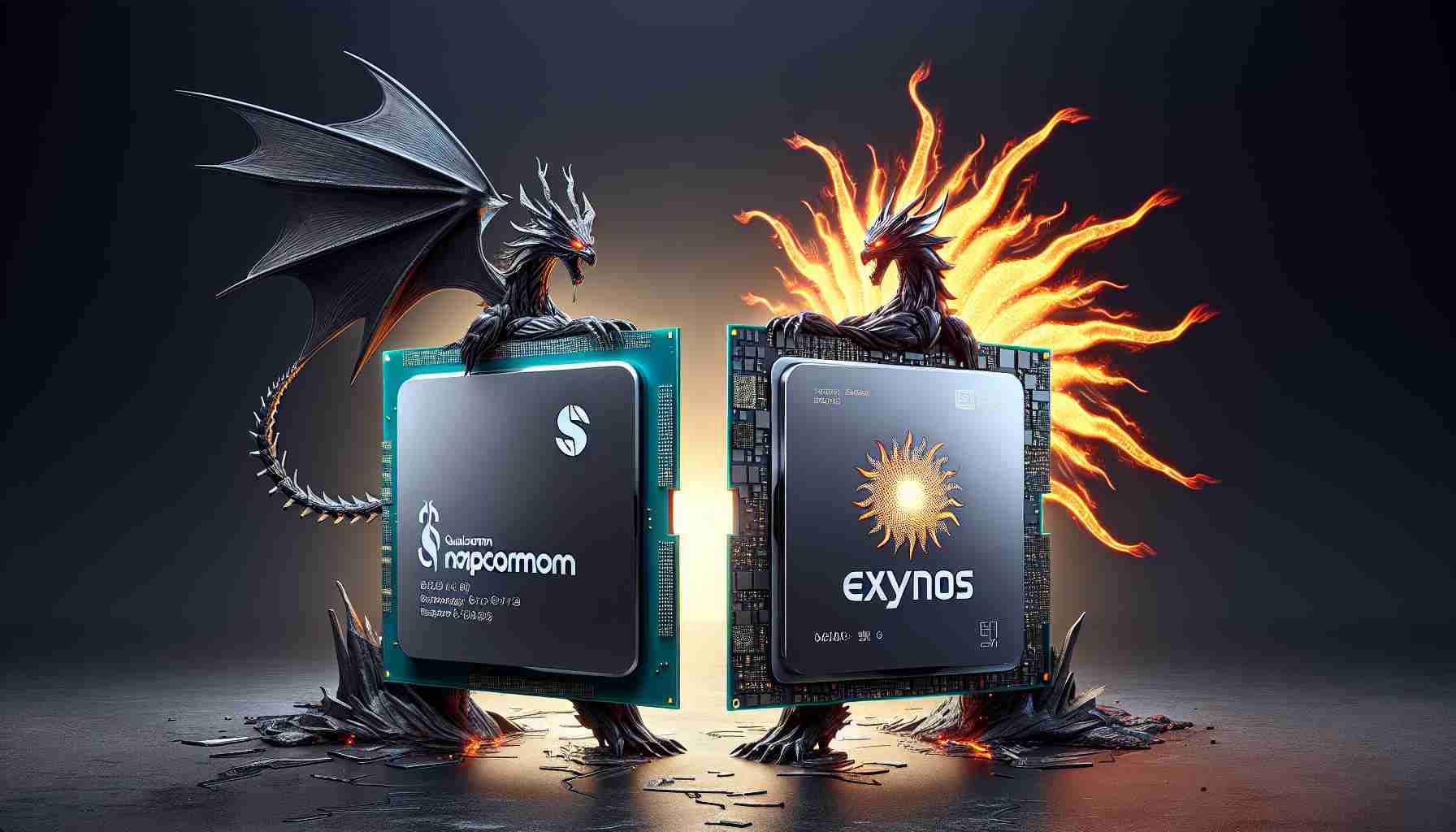Qualcomm and Samsung have always been fierce competitors in the mobile chipset market, and with their latest offerings, the Snapdragon 8 Gen 3 and Exynos 2400, the battle has reached new heights. While both chipsets are designed to power the upcoming Galaxy S24 and S24 Plus smartphones, they have some significant differences that make them worth comparing.
Raw Power: CPU and GPU
The CPU configurations of the two chipsets are quite distinct. The Snapdragon 8 Gen 3 boasts an octa-core setup, with a powerful Cortex-X4 core, mid-core Cortex-A720s, and power-efficient Cortex-A520s. On the other hand, the Exynos 2400 takes things a step further with its ten cores, including Cortex-X4, Cortex-A720, and Cortex-A520 cores. This difference in core count suggests that the Exynos chipset might have an advantage when it comes to multi-core performance.
Moving on to the GPU, Qualcomm utilizes its own Adreno technology, while Samsung incorporates AMD’s RDNA3 architecture in the form of the Xclipse 940. Both GPUs support ray tracing and offer significant performance improvements over their predecessors.
The Power of AI
AI capabilities have become increasingly important in smartphones, and both chipsets have made significant strides in this area. Samsung claims that the Exynos 2400 offers a 14.7x boost in AI performance compared to its predecessor, bringing it on par with the Snapdragon 8 Gen 3’s Hexagon NPU.
Networking and Connectivity
Both chipsets support sub-6GHz and mmWave connections, but Qualcomm takes the lead with its FastConnect 7800 add-on, offering Wi-Fi 7 support. This means that the Galaxy S24 and S24 Plus equipped with the Snapdragon chipset will have access to the latest Wi-Fi technology.
Manufacturing Process
Qualcomm’s Snapdragon 8 Gen 3 is manufactured on TSMC’s 4nm process, while the Exynos 2400 is built on Samsung Foundries’ 4nm LPP+ process. The manufacturing process could potentially impact the performance and energy efficiency of the chipsets.
Does It Really Matter?
At the end of the day, the choice between the Snapdragon 8 Gen 3 and Exynos 2400 may not make a huge difference for most users. Samsung ensures that both versions of the Galaxy S24 and S24 Plus receive the same features, including the latest AI tools, Bluetooth and Wi-Fi options, and other key specifications.
While there may be slight variations in performance and efficiency, the average user is unlikely to notice a significant difference. So, whether you end up with the Snapdragon or Exynos version of the Galaxy S24, rest assured that you’ll have a powerful and capable smartphone in your hands.
Często zadawane pytania (FAQ)
1. Jakie są najważniejsze różnice między chipsetami Snapdragon 8 Gen 3 a Exynos 2400?
Snapdragon 8 Gen 3 ma układ ośmiordzeniowy, z mocnym rdzeniem Cortex-X4, średnio wydajnymi rdzeniami Cortex-A720 i energooszczędnymi rdzeniami Cortex-A520. Z kolei Exynos 2400 ma jeszcze wyższą liczbę rdzeni – dziesięć, z Cortex-X4, Cortex-A720 i Cortex-A520. Ta różnica w liczbie rdzeni sugeruje, że chipset Exynos może mieć przewagę podczas pracy wielordzeniowej. Obie jednostki GPU, Adreno od Qualcomm i Xclipse 940 z architekturą RDNA3 od AMD, obsługują śledzenie promieni i oferują znaczące wzrosty wydajności w porównaniu do ich poprzedników.
2. Jak wygląda sytuacja z możliwościami sztucznej inteligencji w obu chipsetach?
Oba chipsety zrobiły postęp w obszarze sztucznej inteligencji. Samsung twierdzi, że Exynos 2400 oferuje wzrost wydajności sztucznej inteligencji o 14,7 raza w porównaniu z poprzednikiem, co stawia go na równi z Hexagon NPU Snapdragona 8 Gen 3.
3. Jakie są możliwości łączności i sieciowej w tych chipsetach?
Oba chipsety obsługują połączenia sub-6GHz i mmWave, ale Qualcomm przejmuje prowadzenie dzięki swojemu dodatkowi FastConnect 7800, oferującemu wsparcie dla WiFi 7. Oznacza to, że Galaxy S24 i S24 Plus wyposażone w chipset Snapdragon będą miały dostęp do najnowszej technologii WiFi.
4. Jak wygląda proces produkcji tych chipsetów?
Snapdragon 8 Gen 3 od Qualcomm jest produkowany w procesie 4nm TSMC, podczas gdy Exynos 2400 jest produkowany w procesie 4nm LPP+ Samsung Foundries. Proces produkcyjny może potencjalnie wpływać na wydajność i efektywność energetyczną chipsetów.
5. Czy to naprawdę ma znaczenie?
Ostatecznie wybór między Snapdragonem 8 Gen 3 a Exynosem 2400 może nie mieć ogromnego znaczenia dla większości użytkowników. Samsung zapewnia, że obie wersje Galaxy S24 oraz S24 Plus będą posiadały takie same funkcje, w tym najnowsze narzędzia do sztucznej inteligencji, opcje Bluetooth i WiFi oraz inne kluczowe specyfikacje. Chociaż mogą być nieznaczne różnice w wydajności i efektywności, przeciętny użytkownik raczej nie zauważy znaczącej różnicy. Tak więc, niezależnie od tego, czy wybierzesz wersję z Snapdragonem czy Exynosem dla Galaxy S24, możesz być pewny, że będziesz mieć w rękach potężny i wydajny smartfon.
Sugerowane powiązane linki:
Strona Qualcomm
Strona Samsung
The source of the article is from the blog kewauneecomet.com
